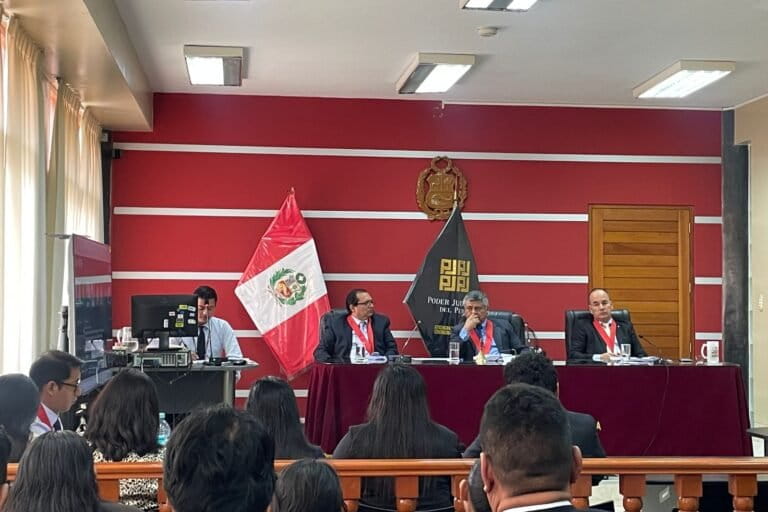Medicinal value of chocolate explored by scientists
Mars, Incorporated release
February 9, 2006
The cocoa plant (Theobroma cacao) holds tremendous potential to impact public health and improve the socioeconomic and ecological landscape of the countries where it’s grown, according to leading world scientists who convened at the National Academies today to examine the latest scientific advances in cocoa research.
Building on the first-ever cocoa science symposium held at The National Academies in 2004, today’s symposium brought together a multi-disciplinary international group of scientists from the public and private sectors to review the most recent scientific advances related to cocoa – from its potential to improve public health to its role in preserving the tropical ecosystems where cocoa is grown.
“This symposium highlights the surprisingly diverse and positive role that cocoa can potentially play in improving public health and reinvigorating endangered tropical ecosystems,” said symposium co-chair Alan Bennett, PhD, Associate Vice Chancellor for Research and Professor of Plant Sciences at the University of California, Davis. “It also highlights the impact that collaborative efforts among public and private sector scientists from research centers such as Harvard, USDA-Agricultural Research Service, University of California, Davis, Smithsonian Tropical Research Institute and Mars, Incorporated, among others, can have in a relatively short time.”
Symposium co-chair Helmut Sies, MD, Professor at Heinrich-Heine University in Germany added, “Based on the exciting research findings presented today and published recently in leading scientific journals, we are witnessing an explosion of cocoa science that has the potential to change the lives of people in terms of their health and their ability to impact the environment.”
Norman Hollenberg, MD, PhD, Professor of Medicine at Harvard Medical School, presented epidemiological findings that suggest flavanol-rich foods, such as specific cocoas, could provide an unexpectedly large benefit in the management of the two most common causes of death in today’s world: cardiovascular disease and cancer.
 Leaf of the cacao plant. Courtesy of the USDA.
The National Academies Washington, DC February 9-10, 2006 Summaries of Key Presentations BIOMEDICAL SCIENCE: — Cocoa Flavanols, Nitric Oxide and Endothelial Function Expert: Norman Hollenberg, MD, PhD, Harvard Medical School Study of an indigenous population off the coast of Panama have — Cocoa Flavanols: Bioactive Nutrients Beyond Antioxidants? This new study identifies the flavanol, (-)epicatechin, as one COCOA SUSTAINABILITY – PLANT SCIENCE: — Integrating Genomics into an Applied Cacao Breeding Program Expert: Raymond Schnell, PhD, USDA-ARS A collaboration between USDA-ARS and Mars, Incorporated COCOA SUSTAINABILITY – SOCIOECONOMICS & ECOLOGY: Expert: Howard Yana-Shapiro, PhD, Mars, Incorporated — Cultivating Diversity: The Role of Cacao Agroforestry Systems — Cocoa Farming Made More Profitable through the Sustainable — The African Research Infrastructure: Is There a Role for Cocoa HISTORY OF COCOA — Cocoa and Chocolate during the American Revolution Era Expert: Louis Grivetti, PhD, University of California, Davis A rich history of chocolate consumption has been uncovered |
A long-time collaborator with Mars, Hollenberg studied two populations of Kuna Indians. The indigenous Kuna Indians living on a chain of islands near Panama still drink large quantities of a homemade, flavanol-rich cocoa every day. In contrast, the Kuna Indians who migrated from the islands and live in and around Panama City consume little cocoa, and the cocoa they do consume is commercially processed and relatively low in flavanols.
In data obtained from death certificates, Hollenberg found that the Kuna Indians living on the islands had significantly lower rates of heart disease and cancer. The relative risk of death from heart disease on the Panama mainland was 1,280 percent higher than on the islands, and death from cancer was 630 percent higher.
“Our results indicate that a flavanol-rich diet may provide an extraordinary benefit in the reduction of the two deadliest diseases in today’s world,” said Hollenberg, who has been working with the Kuna Indians for more than 10 years. “Though preliminary, the data collected thus far are striking in terms of both risk reduction and potential public health significance. Further research is clearly warranted to conclusively define the relationship between consumption of dietary flavanols and incidence of cardiovascular disease and cancer in this population, as well as others.”
Previous research by Harvard’s Hollenberg and scientists from UKA Aachen and Heinrich-Heine University in Germany, the University of California, Davis and Mars, Incorporated published in the Proceedings of the National Academy of Sciences (PNAS), January 24, 2006, found that the island-dwelling Kuna Indians had significantly higher levels of flavanols in their bloodstream, as well as higher levels of nitric oxide metabolites – a marker for normal blood vessel function and healthy blood flow. In addition, this study was the first to provide direct evidence that a specific nutrient in cocoa, the flavanol (-)epicatechin, can help improve blood vessel relaxation, which is an important factor in cardiovascular health.
Hagen Schroeter, PhD, faculty member at UC, Davis, and Christian Heiss, MD, at UC, San Francisco, co-authors on the study published in PNAS, presented additional new data at today’s symposium demonstrating that the cardiovascular benefits observed following consumption of a flavanol-rich cocoa are not merely dependent on so-called antioxidant effects. “The concept that the benefits derived from cocoa consumption are solely related to antioxidant properties represent a view that is not accurate,” said Schroeter. “Furthermore, most of the flavanols present in plasma have been altered by the body following consumption, and are known to have even less antioxidant potential than their parent flavanols. Therefore, the specific flavanol content and composition of cocoa, and the cardiovascular activities they exhibit beyond their antioxidant effects, are far more interesting and important to public health researchers.”
New data presented at today’s meeting resulting from a research collaboration between Mars, Incorporated and the Shanghai Institute of Materia Medica of the Chinese Academy of Sciences further emphasizes the interesting bioactivity that cocoa flavanols can exhibit. “Working with cocoa scientists from Mars, Incorporated, we were able to demonstrate in model systems that certain cocoa flavanols have the potential to inhibit biochemical pathways that can cause inflammation, which is a process that can contribute to cardiovascular disease and other health issues,” said Dr. Dongmei Chen, one of the study’s co-authors.
Analytical data presented by Mars, Incorporated – world leaders for many years in understanding how to best measure flavanols in cocoa and other plant foods – demonstrated that antioxidant measures commonly used by many researchers and food manufacturers are not accurate when compared to validated primary measures.
“Taken together, it is clear that cocoa flavanols go well beyond the general class of nutrients called antioxidants in terms of their effect on cardiovascular function,” said Harold Schmitz, PhD, Chief Science Officer of Mars, Incorporated and a co-author on the study. “The evidence base is such that scientists should stop referring to cocoa flavanols as antioxidants, and should most certainly stop estimating cocoa flavanol content using antioxidant capacity methodologies that are inherently flawed and misleading to clinical researchers and health professionals.” Schmitz heads up the global cocoa science research portfolio at Mars, Incorporated, which has collaborated on studies at Harvard, Heinrich-Heine University, University of California, Davis, USDA-ARS, University of Nottingham and many other leading research institutions around the world.
Rare for science programs in today’s industrial environment, Mars has been committed to cocoa science investments for more than 15 years, and this investment has resulted in world-leading innovations such as a proprietary method of processing cocoa called Cocoapro(R). This patented technology – which helps retain the naturally occurring flavanols – is used to make unique cocoa ingredients for Dove(R) Dark Chocolate and the new heart-healthy snack CocoaVia(TM). Mars identified the need for this innovation because traditional cocoa processing methods often destroy these bioactive nutrients.
Carl Keen, PhD, Chair of the Department of Nutrition at the University of California, Davis, who has also collaborated on a number of cocoa flavanol studies, chaired the session exploring the link between cocoa flavanols and cardiovascular health in which Hollenberg and Schroeter, along with Joseph Spence, PhD, USDA-ARS, presented their new findings. Keen said people often forget that cocoa is derived from a plant, and they don’t realize that cocoa contains similar healthful nutrients found in fruit and vegetables. For example, the flavanol (-)epicatechin – a nutrient especially abundant in certain cocoas – is also found in certain fruit and vegetables, such as apples and grapes.
“The new insights into the bioactivity of cocoa flavanols revealed during the symposium today add new and important pieces of information that will help us understand why diets rich in fruit and vegetables promote cardiovascular health,” Keen said. “Nutrition experts have been telling people for years that fruit and vegetables are good for our hearts. Now scientists are taking the next step by identifying exactly which nutrients may be beneficial and exactly why they are.”
Using Cocoa Science to Make a Positive Difference for the Farmer
In addition to breaking research in the area of cardiovascular health, presentations highlighted new opportunities for cocoa to provide social, economic and environmental benefits to the millions of farmers who depend on this unique crop for their livelihoods. Every year, many cocoa farmers lose a third or more of this fragile crop due to pests and diseases – or simply because of a lack of appropriate training, the use of rudimentary farming techniques, or other challenges.
A large proportion of the world-leading cocoa science portfolio of Mars continues to be dedicated to improving the lives of cocoa farmers and their surrounding environments in the three main cocoa growing regions of the world – West Africa, the Americas and Southeast Asia. For decades, Mars has been at the forefront of unique public/private partnerships that create new ecological and socioeconomic opportunities for the millions of farmers throughout the tropics who depend on cocoa for their livelihood.
Partnerships with the U.S. Department of Agriculture-Agricultural Research Service (USDA-ARS), U.S. Agency for International Development (USAID), Smithsonian Tropical Research Institute and others have focused on providing science and developing programs to promote sustainable, responsible cocoa farming. Projects have helped to improve farmer incomes, enhance productivity and conserve tropical forest ecosystems.
“Our science partnership with Mars has demonstrated the potential in some exciting new technologies for crop management,” said Judy St. John, Deputy Administrator of USDA-ARS. “Together, we are working on environmentally safe solutions to control the pest and disease problems that wreak havoc on cocoa crops worldwide. One such solution seeks to introduce pheromones as a biological control attractant to trap invasive pests such as the cocoa pod borer, a primary threat to the Asian cocoa crop. Because pheromones are naturally produced, there is a benign effect on the environment.”
The symposium highlighted other successful partnerships, including a program administered by Winrock International and supported by Mars that provides children in the Ivory Coast access to relevant agricultural education. The Sustainable Tree Crops Program (STCP) – a public/private partnership supported by USAID, Mars and other industry members – provides on-the-ground farmer training in West African cocoa communities. The initial outcome of this pilot program resulted in the potential to increase incomes by 20 percent. This program is now serving as a model for industry-wide initiatives to educate farmers in cocoa-growing countries.
“It is extraordinary and gratifying to be with a company that has made this type of long-term commitment to science, to not only protect the environment and human health, but also to protect the farmers’ economic livelihood – the cocoa tree. Mars is at the forefront of efforts that are truly making a difference for cocoa farmers, their families, and their communities,” said Howard-Yana Shapiro, PhD, Director of Plant Science and External Research at Mars, Incorporated. “We are at the very beginning of a new era in cocoa – the crop has tremendous potential to help alleviate poverty and protect endangered tropical ecosystems.”
About the Symposium
Theobroma Cacao: The Tree of Change was convened at the National Academies in Washington, DC. The co-sponsors of the symposium include: Chinese Academy of Sciences; Mars, Incorporated; Rabobank; Royal Botanical Gardens, Kew; Smithsonian Tropical Research Institute; Sustainable Tree Crops Program/International Institute for Tropical Agriculture; Union of German Academies of Sciences and Humanities; University of California-Davis; U.S. Agency for International Development; U.S. Department of Agriculture-Agricultural Research Service; USDA Forest Service International Programs; and ICRAF, The World Agroforestry Centre.
A live audio conference from the symposium is available on Thursday, February 9, from 12:15pm – 1:15pm ET. Join the audio conference by dialing 866-850-2201 and use the confirmation code, 3619664.
Mars, Incorporated, headquartered in McLean, Virginia, is a privately-held company with a strong commitment to science-based research. With well over 15 years of research into the health benefits of cocoa flavanols, and decades of research invested into improving the cocoa plant and farming techniques, Mars, Incorporated has become the global leader in cocoa science. For more information, visit www.cocoapro.com. For more information about Mars cocoa sustainability program, visit www.cocoasustainability.mars.com.
Related articles
Drugs derived from chocolate? Candy-maker Mars in talks
Mars, Incorporated, the privately held U.S. company company that produces M&Ms, Twix, Snickers and other confectionaries is in talks with several large pharmaceutical companies to develop medications based on flavanols — plant chemicals with health benefits found in cocoa, according to a report from Reuters.
You shoud think twice before feeding your pet a chocolate bar. The sweet treat could be its last meal. Chocolate contains theobromine, a compound that is a strong chemical stimulant. In humans, who metabolize the alkaloid quickly, theobromine has been shown to have some beneficial effects including mood elevation, myocardial stimulation, cough surpression, and vasodilation (widening of blood vessels from relaxation of the muscular wall of the vessels).
A new study conducted by researchers at Children’s Hospital & Research Center Oakland is the first to discover that a chemical in cocoa beans can limit the development of fluids that cause diarrhea. Cocoa beans contain a large amount of chemicals called flavonoids. Scientists believe that these flavonoids can be used to create natural supplements to ease diarrhea symptoms. Dark chocolate contains high concentrations of cocoa and may offer mild relief.
Flavanols found in chocolate have health benefits
Phytochemicals known as flavanols, which are found in chocolate, fruits and vegetables, can boost the levels of nitric oxide in the blood of smokers and reverse some of their smoking-related impairment in blood vessel function, according to a new study in the Oct. 4, 2005, issue of the Journal of the American College of Cardiology
This is a modified news release from Mars, Incorporated.













